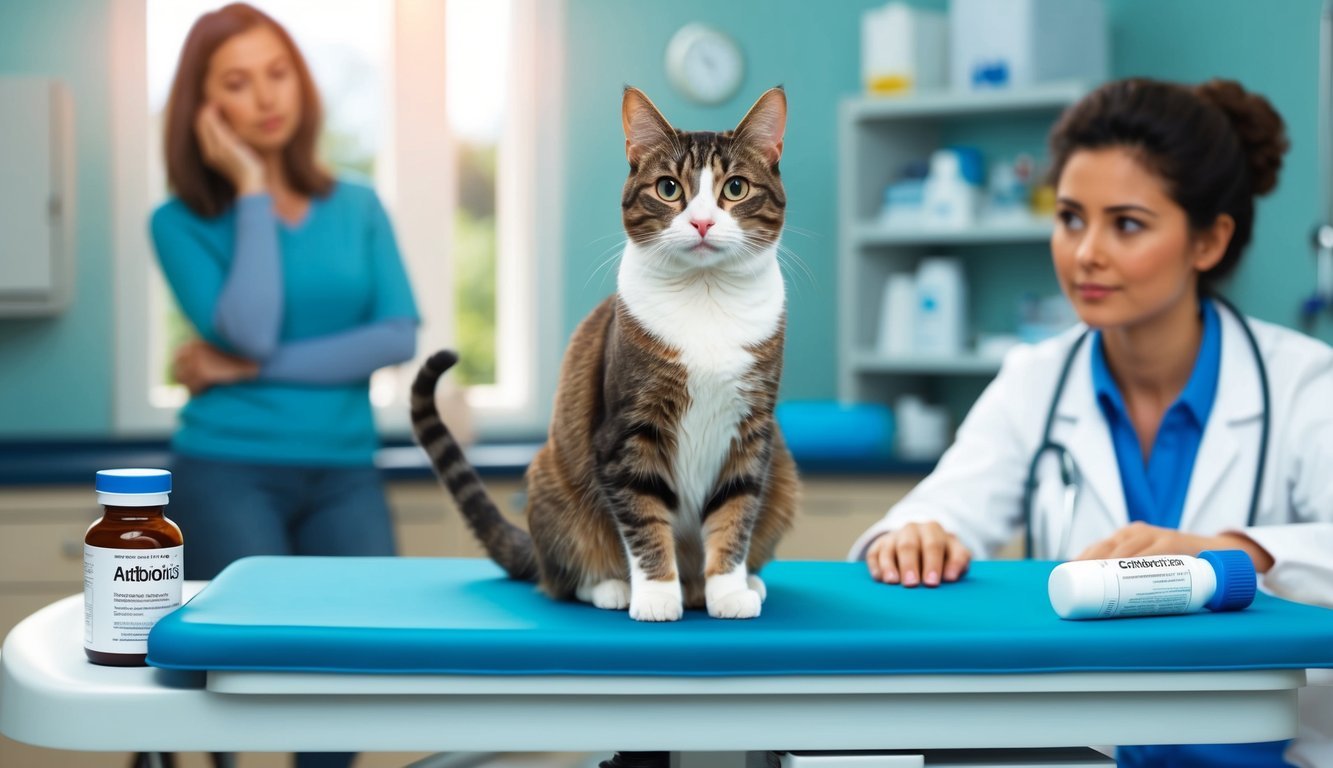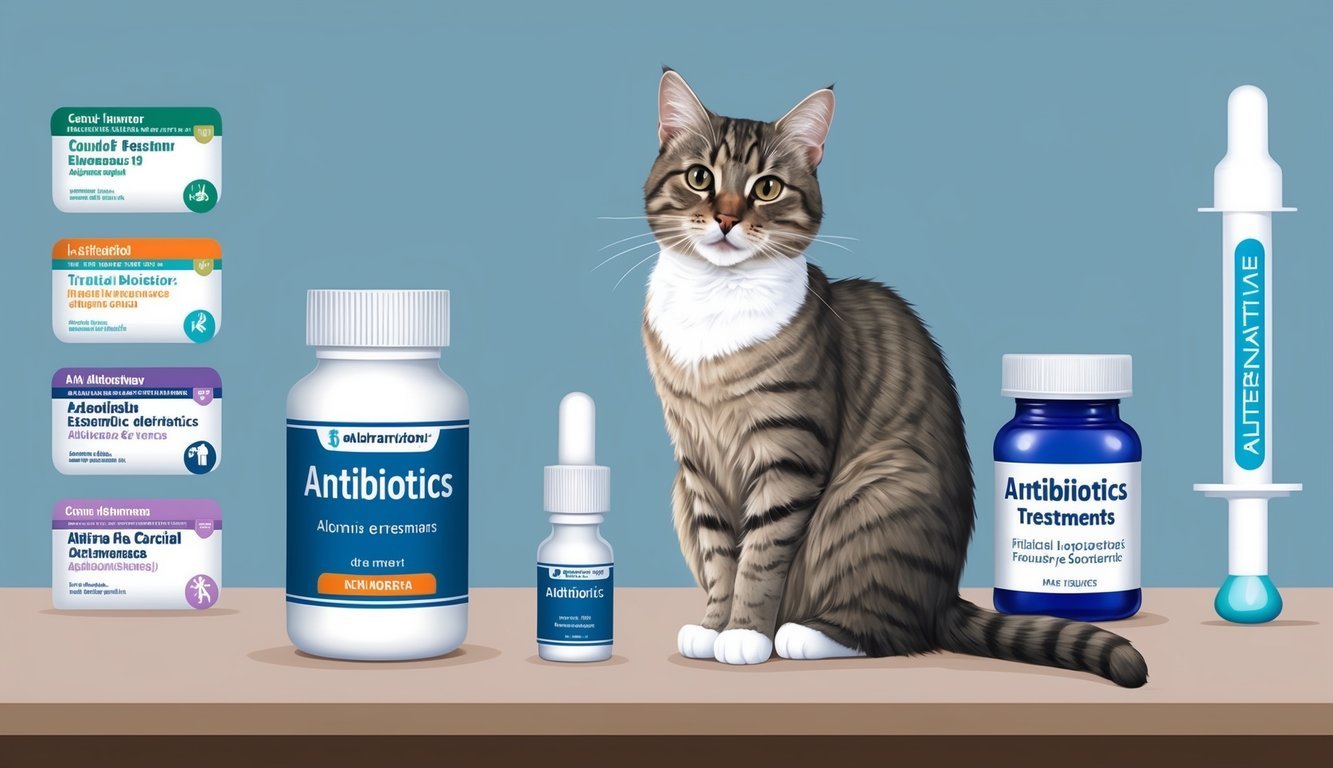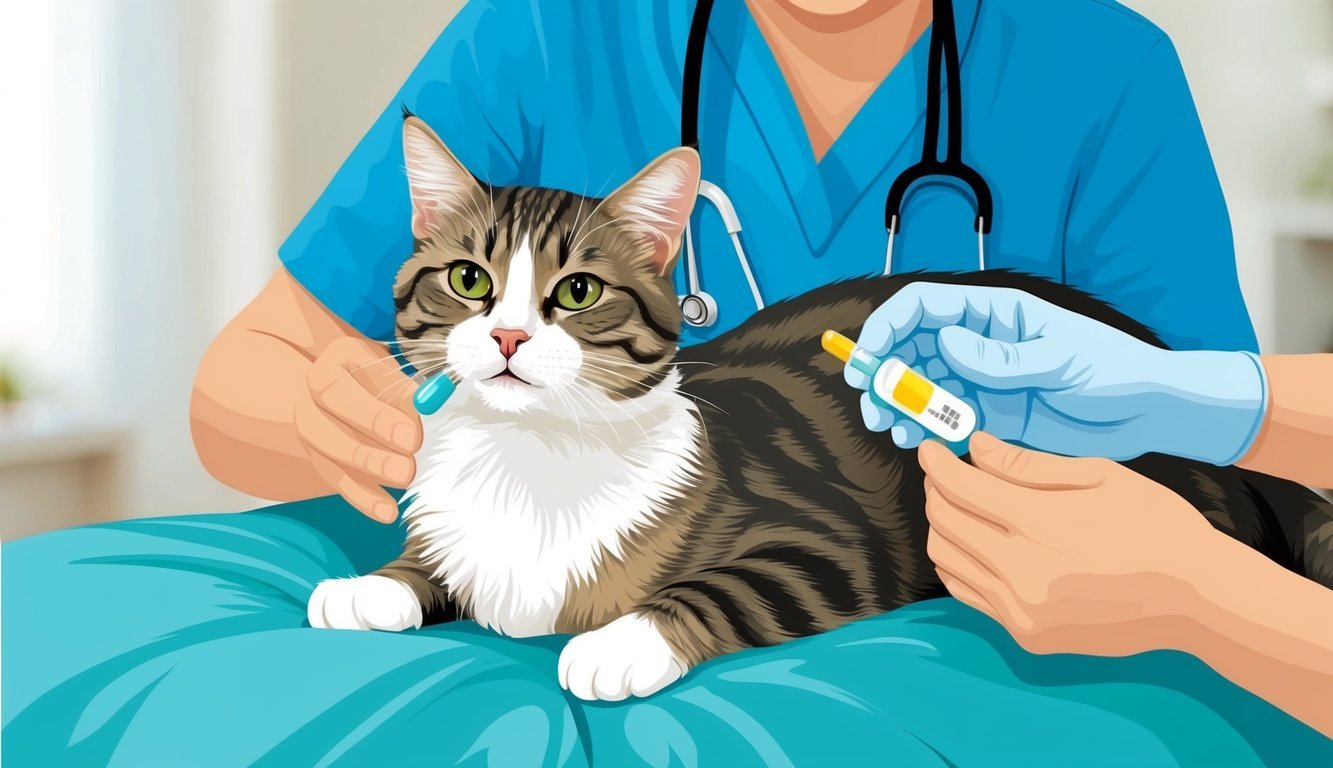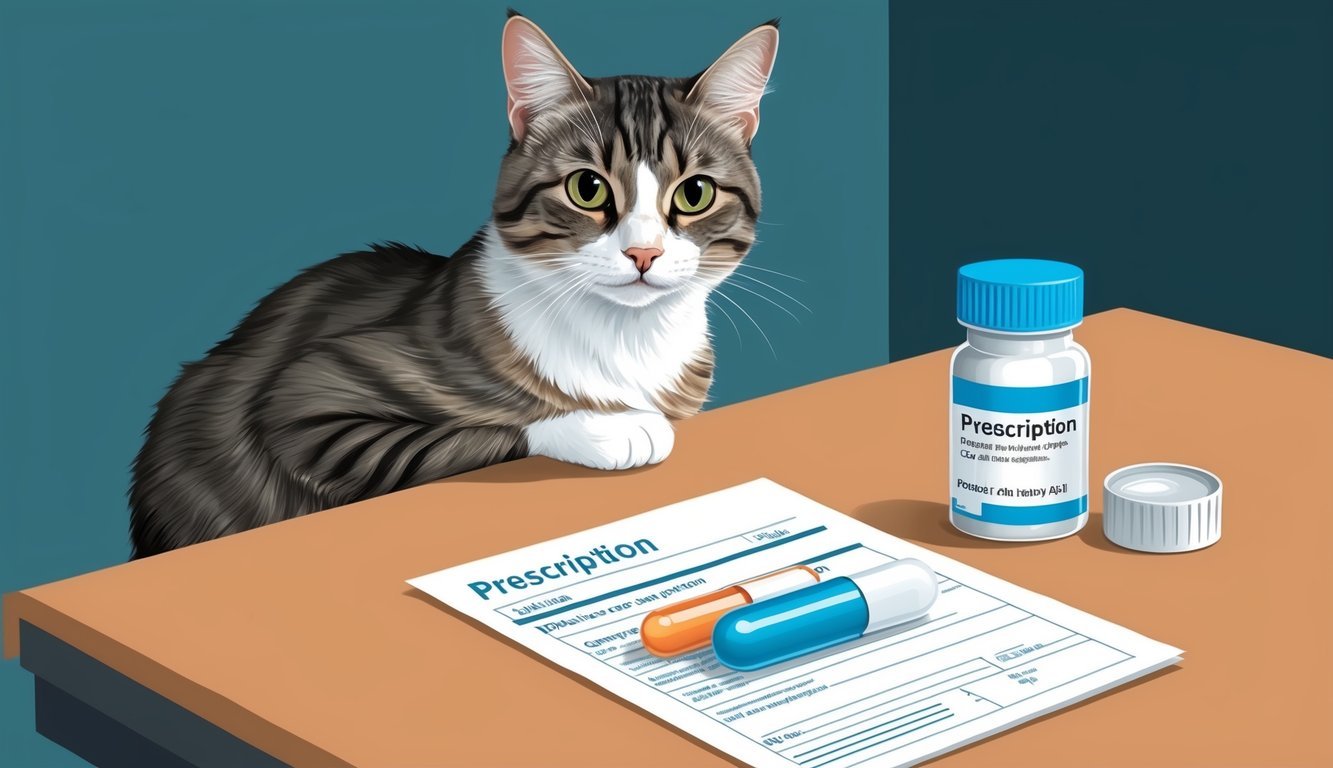When considering your cat’s health, you may wonder if human antibiotics could be safe and effective in treating your furry friend. The truth is that while some human antibiotics can be prescribed for cats, many are dangerous and potentially harmful.
It’s crucial to understand that a cat’s metabolism differs significantly from ours, making it essential to avoid self-medicating and always consult with a veterinarian.
Antibiotics are powerful tools designed to fight bacterial infections, but they must be used appropriately for your cat’s wellbeing.
Some antibiotics, like amoxicillin, can be safe when specifically prescribed by your vet, while others can cause severe side effects.
Knowing which medications are suitable for felines and which are not can make all the difference in your pet’s recovery.
In this article, you’ll find valuable insights into the use of antibiotics for cats.
From understanding the risks of misusing human medications to exploring safe alternatives, you’ll be equipped with the knowledge needed to keep your cat healthy and happy.
Key Takeaways
- Some human antibiotics can be safe for cats if prescribed by a veterinarian.
- Misuse of human antibiotics can lead to serious health risks for your cat.
- Always consult a vet before administering any medication to your pet.
Understanding Antibiotics
Antibiotics are crucial in treating infections, but their application varies significantly between humans and cats.
In this section, you’ll learn what antibiotics are, how they differ for humans and cats, and the issue of antibiotic resistance in feline patients.
What Are Antibiotics?
Antibiotics are medications designed to combat bacterial infections.
They work by either killing bacteria or inhibiting their growth.
There are various types, including penicillins, tetracyclines, and fluoroquinolones, each targeting specific bacterial strains.
When it comes to cats, veterinarians prescribe certain antibiotics tailored for their unique physiology.
Common cat antibiotics include amoxicillin, clindamycin, and enrofloxacin.
Using antibiotics responsibly is essential to prevent resistance and ensure effectiveness.
Human vs. Cat Antibiotics
Not all human antibiotics are safe for cats.
Some human medications can be toxic to cats due to differences in metabolism.
For instance, while amoxicillin is often safe for feline use, other antibiotics like erythromycin can cause serious health issues.
Here’s a brief comparison:
| Type | Human Use | Safe for Cats |
|---|---|---|
| Penicillins | Yes | Amoxicillin |
| Macrolides | Yes | Not typically recommended |
| Tetracyclines | Yes | Doxycycline |
| Fluoroquinolones | Yes | Enrofloxacin, Pradofloxacin |
Always consult your veterinarian before giving any medication, as they can recommend safe and effective options.
Antibiotic Resistance in Cats
Antibiotic resistance is a growing concern in veterinary medicine.
When antibiotics are overused or misused, bacteria can adapt, rendering treatments less effective.
In cats, signs of resistance may include persistent infections that do not respond to standard antibiotic treatments.
To combat this issue, it’s crucial to administer antibiotics only as prescribed by your vet and complete the full course of treatment as directed.
Responsible antibiotic use not only protects your cat’s health but also helps reduce the spread of resistant bacteria in the wider environment.
Infections and Antibiotic Use in Cats

Cats can be prone to various infections that may require antibiotic treatment.
Understanding common types of infections and how they are diagnosed can help you seek timely veterinary guidance.
Common Infections in Cats
Some common infections in cats include:
-
Urinary Tract Infections: Symptoms may include frequent urination, straining to urinate, or blood in the urine. These infections can be particularly painful for your cat.
-
Skin Infections: Often caused by bacteria or allergies, signs can include redness, swelling, or scabs on the skin.
-
Respiratory Infections: Symptoms might include coughing, sneezing, or nasal discharge. Infectious agents can range from viruses to bacteria.
When you notice these symptoms, it’s advisable to consult with your veterinarian.
Early intervention often leads to more effective treatment options.
Diagnosing Bacterial Infections
Diagnosing a bacterial infection in your cat typically involves:
-
Physical Examination: Your vet will assess symptoms and overall health.
-
Bacterial Culture: This test helps identify the specific bacteria causing the infection. Having accurate information ensures the right antibiotic can be prescribed.
-
Additional Tests: Depending on the situation, your vet might recommend blood tests or imaging studies.
Antibiotic treatment should only be started under veterinary guidance.
Not all infections require antibiotics, and improper use can lead to resistance or harm your cat.
Always follow your veterinarian’s instructions for the best results.
Risks of Using Human Antibiotics
Giving your cat human antibiotics carries several risks that you should be aware of.
It’s not just about the potential for toxicity; allergic reactions can also pose significant challenges for feline health.
Toxicity and Side Effects
When you give your cat human antibiotics, toxicity can become a major concern.
Cats metabolize medications differently than humans do.
Even antibiotics prescribed for cats can lead to side effects such as vomiting, diarrhea, and lethargy.
Common side effects include:
- Gastrointestinal upset: This can manifest as vomiting or diarrhea, making your cat feel uncomfortable.
- Loss of appetite: Cats may refuse food when feeling unwell.
- Fever: An unusual rise in temperature can indicate an adverse reaction.
Monitoring your cat for these signs is crucial.
If you notice any of these symptoms, you should contact your veterinarian immediately.
Allergic Reactions to Antibiotics
Allergic reactions can complicate the use of human antibiotics in cats.
Symptoms of an allergic reaction vary but may include:
- Skin irritations such as rashes or excessive scratching.
- Swelling of the face or limbs.
- Breathing difficulties, which are signs of a severe reaction.
If you see any signs of an allergic reaction, stop administering the antibiotic and seek veterinary help as soon as possible.
Cats can experience serious complications, so it’s essential to act quickly.
Always consult your veterinarian before giving any medication to your cat.
Proper Antibiotic Use in Cats
Using antibiotics for cats requires careful consideration and veterinary guidance.
While some human antibiotics may be suitable, it’s important to understand which ones are safe and how to administer them correctly.
Veterinary-Approved Antibiotics
When it comes to treating your cat, it’s crucial to use antibiotics that are specifically approved for veterinary use.
Some commonly used antibiotics include:
- Amoxicillin: A penicillin-type antibiotic that’s often prescribed.
- Clindamycin: Effective for certain bacterial infections.
- Doxycycline: Useful for a range of infections.
Fluoroquinolones, such as Pradofloxacin and Marbofloxacin, are also available but are used primarily for specific conditions.
Always consult your veterinarian before administering any medication, as some human antibiotics can be toxic to cats.
Avoid using antibiotics like penicillin or erythromycin, as these can cause serious health issues.
Dosage and Administration
Correct dosage is essential when giving antibiotics to your cat.
Dosages can differ significantly between human and veterinary formulations.
For example, human antibiotics may be up to 10 times more concentrated.
Your vet will determine the appropriate dosage based on your cat’s weight and health condition.
Use a syringe or a pill pocket to administer the medication.
It’s important to follow the entire treatment duration prescribed by your veterinarian, even if your cat appears to improve.
Stopping early can lead to antibiotic resistance or incomplete treatment of infections.
Always observe your cat for any adverse reactions and report these to your vet immediately.
Specific Antibiotics and Alternatives

When considering treatment options for your cat’s bacterial infections, knowing the appropriate antibiotics and potential alternatives is crucial.
Some common antibiotics can be effective, while others may pose risks.
Commonly Prescribed Antibiotics for Cats
Several antibiotics are frequently prescribed in veterinary medicine to treat cats effectively.
Here are some key options:
-
Amoxicillin: Often the first choice, this penicillin-type antibiotic treats various infections but must be used only under a vet’s guidance.
-
Clindamycin: Effective against certain skin and dental infections, Clindamycin is a favorite for treating anaerobic bacteria.
-
Cephalexin: A cephalosporin antibiotic, this is suitable for skin infections and is generally well-tolerated by cats.
-
Enrofloxacin: This fluoroquinolone antibiotic can be used for more severe infections but carries a risk for certain side effects in cats.
Always consult your veterinarian for the appropriate choice tailored to your cat’s specific condition.
Alternative and Advanced Treatments
If traditional antibiotics aren’t suitable, consider alternative treatments.
Some options include:
-
Doxycycline: Useful for respiratory infections, it has a broader spectrum and may be prescribed for certain conditions.
-
Metronidazole: Often used for gastrointestinal issues, it helps combat protozoal infections and some bacterial strains.
-
Azithromycin: This is sometimes utilized for respiratory infections, particularly in cases resistant to first-line treatments.
You might also explore natural alternatives like probiotics or specific herbal remedies.
Always seek professional veterinary advice before trying any new treatment options.
Your cat’s health is paramount, and a veterinary professional can guide you in finding safe solutions tailored to their needs.
Caring for Your Cat During Treatment

Taking care of your cat during treatment is crucial for their recovery.
If your cat is prescribed medication, keep an eye on how they react.
Many antibiotics can cause gastrointestinal upset.
Signs may include vomiting or diarrhea.
If you notice these symptoms, contact your vet right away.
Nausea can also occur.
To help, consider these tips:
- Small Meals: Offer small portions of food more frequently instead of one large meal.
- Hydration: Ensure your cat has access to fresh water at all times.
Rest is important for healing.
Create a quiet and comfortable space for your cat.
This can help reduce stress and promote relaxation.
Keep track of when you give the medication.
Setting reminders can help ensure you don’t miss a dose.
If your cat refuses to take the medication, try these methods:
- Wrap the pill in a small piece of treat.
- Use a pill pocket designed for cats.
- Ask your vet about liquid alternatives.
Always follow your vet’s instructions about dosages and duration.
It can be tempting to stop early if your cat seems better, but completing the treatment is vital for preventing recurrence.
Conclusion

When considering antibiotics for your cat, it’s crucial to prioritize their health and safety.
Human antibiotics can be harmful, as your cat’s metabolism reacts differently to these medications.
Always seek veterinary guidance before administering any medication.
A vet can determine the appropriate treatment and monitor for potential side effects.
Here’s a quick overview of points to remember:
- Consult your vet: Never give your cat human antibiotics without professional advice.
- Antibiotics are specific: Certain medications, like amoxicillin, may be prescribed for cats.
- Toxicity risk: Dosages can be tricky, and excessive amounts can lead to toxicity.
If you’re a pet owner looking for affordable solutions, some platforms offer reader-supported articles that may generate affiliate commissions.
This can be a helpful way to gather insights for your pet’s healthcare.
In short, prioritize your pet’s well-being by consulting with a veterinarian for any antibiotic needs.
It’s the safest approach to ensure your feline friend stays healthy.
Frequently Asked Questions
If you’re considering antibiotics for your cat, it’s important to get the right information.
Here are some common questions that pet owners have regarding the use of antibiotics in cats.
Can cats safely take antibiotics prescribed for humans?
Cats can take certain antibiotics that are also prescribed for humans, but it’s crucial to consult a veterinarian first.
Not all human antibiotics are safe for cats, and incorrect dosages can lead to serious health issues.
Are there any human antibiotics that are considered safe for cats?
Yes, some human antibiotics are considered safe for cats, including amoxicillin, clindamycin, and doxycycline.
These should only be administered under a vet’s guidance, as dosage and suitability can vary.
What’s the risk of giving my cat antibiotics without a vet consultation?
Administering antibiotics without consulting a veterinarian poses significant risks.
Cats can suffer from toxicity or adverse reactions, especially if given the wrong medication or dosage.
How does cat amoxicillin differ from human amoxicillin?
While amoxicillin is used for both humans and cats, the formulations may differ.
Cat amoxicillin is specifically dosed for felines, taking their size and metabolism into account, which is vital for effectiveness and safety.
What are some effective natural alternatives to antibiotics for cats?
Some natural alternatives include probiotics, manuka honey, and certain herbs like echinacea.
These may support your cat’s immune system but should not replace prescribed antibiotics for serious infections.
For how long is it typically safe for a cat to be on antibiotics?
The duration for which a cat can safely take antibiotics varies by medication and condition.
Generally, it’s not advisable to exceed a few weeks without veterinary approval.
Prolonged use can lead to resistance or side effects.

